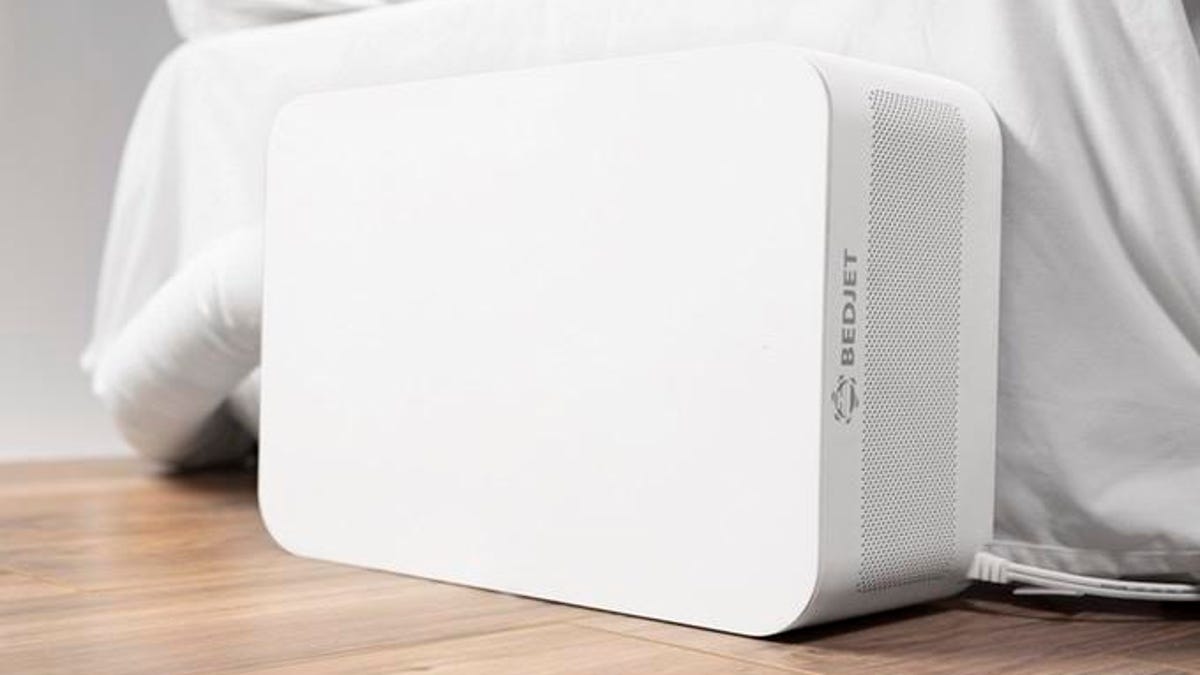BedJet 3: Heat your sheets with Alexa
The newest BedJet uses Wi-Fi, Alexa and IFTTT to help set your bed to the perfect temp.

BedJet is back with the third iteration of its temp control system for your sheets. Like the previous versions, BedJet 3 is powered by a small engine that should fit under most beds and neatly next to the rest. The engine blows hot or cold air through a hose attached to a nozzle that fits under your sheets.
The third version of BedJet features an upgraded remote control and an upgraded mobile app. While the old BedJets could only communicate through Bluetooth , BedJet 3 connects to Wi-Fi , and you'll be able to control it with voice commands through Amazon's digital assistant, Alexa . BedJet 3 will work with online rules platform IFTTT as well, so you'll be able to integrate it in a larger smart home setup and have your bed start cooling when you turn out the lights, for example.
BedJet, LLC, the startup behind the product, is returning to Kickstarter to launch BedJet 3 after successful crowdfunding campaigns for the first two. BedJet 3's campaign launched earlier in the week and has already greatly exceeded its goal. You can preorder the third BedJet now on Kickstarter for discounts off of the product, with an expected delivery date of December. BedJet 3 will retail for $400. For now, it's only available in the US and Canada, but the company plans on expanding overseas soon. The US price converts to roughly £315 and AU$550.
As always, please note that CNET's reporting on crowdfunding campaigns is not an endorsement of the project or its creators. Before contributing to any campaign, read the crowdfunding site's policies -- in this case, Kickstarter -- to find out your rights (and refund policies, or the lack thereof) before and after a campaign ends.
The basics of BedJet
The basic functionality of BedJet remains the same. You fit a nozzle under your sheets and it blows hot or cold air depending on your preferences. You can set the temp of the air and the amount of airflow. You can put the nozzle over your bottom sheet if you don't want the air blowing directly on you. BedJet also offers an "Aircomfort Cloud Sheet" that replaces your bottom sheet, attaches to the nozzle and fills with air.
With two BedJets and a Dual Zone sheet, you can set different temps on either side of a bed.
The Dual Zone Aircomfort Cloud Sheet separates the airflow going to either side of a bed, so if you have two BedJets, both people in a bed can customize their own settings. The BedJet 2 also introduced a setting where it could automatically change temps to follow your sleep cycle throughout the night -- cooling you off to keep you asleep and warming up to help you wake up.
What's new
With BedJet 3, the new remote will allow you to turn your phone off at night. You previously needed the mobile app to control most of BedJet's advanced functions. You'll even be able to skip physical controls entirely with BedJet 3 thanks to Amazon's Alexa. If you have an Alexa-enabled device like an Amazon Echo , you'll be able to control your BedJet with voice commands.
Hopefully, the Alexa commands will include detailed controls, though the company's Kickstarter page doesn't outline the specifics of the Alexa compatibility as it's still in process.
Outlook
BedJet claims its system is much more effective at helping you sleep than electric blankets or a cooling mattress. Supposedly, the engine itself runs at a quiet 39 dB rating and can cool off your sheets within seconds.
All of that certainly sounds appealing, though I'm skeptical that BedJet's smarts could match my erratic sleep schedule. I'd also worry about its effectiveness given that I toss and turn and occasionally kick away my sheets. Still BedJet's active approach to helping you sleep makes more sense to me than smart beds that simply track your sleep quality.

